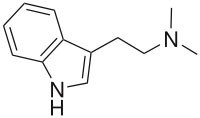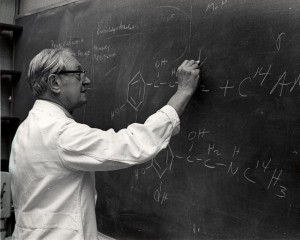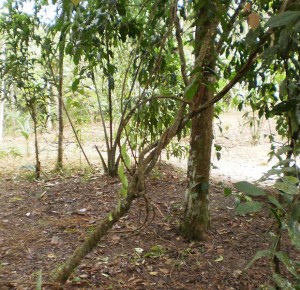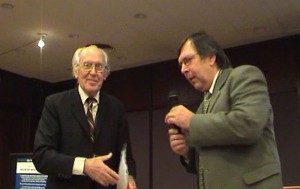Ede Frecska is Principal Investigator of a group of clinical researchers in Hungary. The group’s main tenet is that the naturally occurring Dimethyltryptamine (DMT) molecule has vital therapeutic and clinical qualities, and is pivotal to the progression of brain science. Their hypothesis is that, in event of near death experiences like heart attacks, strokes and deep comas, DMT’s presence on emergency crash carts in ambulances and hospitals could prevent surviving patients from enduring brain damage. The ongoing challenge is to secure funds for research into the ‘Schedule 1’ drug via the group’s crowdfunding site, https://walacea.com/campaigns/dmt/
The DMT4CPR Study at www.dmt4cpr.com
Introduction
Dimethyltryptamine (DMT) is an endogenous hallucinogen, meaning our body is able to make it. It has also been known as trace amine, which means we have it in very tiny amounts compared to other ‘amines’ such as tryptamine and serotonin. In most circumstances DMT is barely detectable in animals, but we predict that it is also released under special circumstances.
While DMT is scarce in animals, it is abundant in the plant kingdom; countless plant species’ specimens contain DMT in significant amounts, and ethnobotanists suppose that DMT is a very ancient natural compound. A metabolite of DMT, indole-3-acetic acid (IAA) is the most common and naturally occurring plant hormone of the ‘auxin’ class. Animals metabolize DMT to IAA and release it in their urine.
In 1961, Julius Axelrod discovered an enzyme called indolethylamine-N-methyltransferase (INMT) that could change the common amine tryptamine into DMT. This finding provoked an ongoing interest in the ability of mammalian tissues to make DMT. INMT can be found in its highest levels in the lungs, thyroid, and adrenal gland. Intermediate levels are also found in the placenta, skeletal muscle, heart, small intestine, stomach, pancreas, and lymph nodes. Contrary to the commonly held view, it is not the pineal glands that can synthetize DMT in a large amount. Nevertheless, the presence of DMT in the pineal gland was proved in 2013. The lungs, because of their size and central role in circulation, are in an ideal position to flood the brain with DMT in an emergency scenario. Based on Rick Strassman’s groundbreaking work, we assume that one emergency scenario can be near (clinical) death.
Since the Comprehensive Drug Abuse Prevention and Control Act of 1970, DMT has received the harshest (‘Schedule 1’) status among drugs that are addictive and/or have no medical use. This however has been unfounded and unjustified, for it’s classification and definition was based on no scientific evidence. DMT is not, in fact, addictive and the traditional medicinal use of DMT- found, for example, in ayahuasca in the Amazon basin, strongly suggests its medical potential.
This suggestion is advanced by the discovery that DMT is an endogenous ligand of the sigma-1 receptor. This receptor can influence the oxygen (energy) utilization of cells, and its activation has therapeutic value in many pathological conditions like stroke, myocardial infarct, retinal degeneration, amyotrophic lateral sclerosis, cancer, hypertension, aging, Alzheimer’s disease, and Parkinson’s disease. The common ground of the aforementioned conditions on a cellular level is protein folding deficit, mitochondrial dysfunction, calcium overload, and glutamate excitotoxicity, which all result from oxidative stress and sigma-1 receptor involvement.
How could DMT be of use to Medicine?
There are many ways that DMT may be useful to modern medicine. This proposal rests on the assumption that one of the physiological roles of endogenous DMT is its protection against oxidative stress, otherwise known as ‘hypoxia’ or lack of oxygen. The way DMT works in the body strongly suggests that it could help our most precious organ, the brain, in times of low oxygen supply. In hospital, this condition occurs in patients who come very close to dying. If a patient’s heart has stopped beating and blood is no longer being pumped to the brain, the brain becomes starved of oxygen and this can lead to brain damage. This scenario, most common in elderly patients is usually the result of a heart attack or heart failure. We could also potentially find use in event of births, when umbilical cords become trapped around babies’ necks.
The longer the brain is starved of oxygen, the greater the chance and extent of brain damage. Our hypothesis is that DMT can extend the amount of time that the brain can survive unscathed in the absence of a steady stream of oxygen. We have already conducted research on DMT and immunology, which has shown a protective effect of DMT on cells. If our hypothesis is correct, the impact could be huge. First of all, we need to do the basic research to test the effect of DMT on neuronal tissue.
The Rationale of the Proposal
Further investigation into DMT’s relationship with the brain has revealed that the brain has what we call an ‘active uptake mechanism’ that aids DMT’s travel through three barriers. Furthermore, when DMT is taken up into the brain, it is stored in little sacs (vesicles) for up to a week. This poses the question, why would the brain store DMT if it does not use it? Research has also shown that a specific receptor called the ‘sigma 1 Receptor’ plays a protective role in oxidative stress and that DMT is one of the few ‘endogenous amines’ that binds to this receptor.
Additionally, testimonies of near death experiences lead us to believe that DMT plays a vital role during death. Many of the symptoms people describe; like seeing a light, reviewing past events with moral charge, and entities appearing, are very similar to the experiences people have on DMT. Research has also suggested that DMT may be involved in the birth process due to a high presence of the IMNT gene (which has the potential to make DMT) in the placenta.
Our Methodology
We are a group of basic and clinical researchers in Hungary who follow the line of investigation started by the Hungarian Stephen Szara’s groundbreaking clinical studies with DMT. We are among the first ones who broke away of the mainstream scientific view of DMT as a psychopathological agent and proposed a somatophysiological role for this endogenous tryptamine, which is naturally occurring in the body. Our main tenet is that DMT is not only involved in the healing and regeneration of cells, but it also helps the body to survive extreme stress like clinical death. Our group has already provided experimental support of this concept in the field of immunology.
To test our hypothesis, the first experimental step towards this goal involves exposing neuronal tissue cultures to a hypoxic (low oxygen) condition. We will conduct these studies in the lab, replicating the stress that neurons undergo by lack of oxygen, and testing the effect DMT has on the neurons under these conditions. Stem cell induced cortical neurons will be placed in an oxygen chamber with 3% oxygen. Batches of them will receive DMT in increasing concentrations, and their viability tested by a fluorometric flow-cytometry method. The primary goal is to test if DMT helps cell survival, but we also seek to assess, with a recetorblocker, if the effect is mediated via the sigma-1 receptor. If our hypothesis is correct, we will be in a better position to extend our research to testing the drug in animals, and later in human patients.
The Significance of the Planned Study
If our hypothesis is correct, the impact of this research could be huge. Not only will we have demonstrated a potential clinical use for DMT, for we also could be changing the lives of people who survive strokes and heart attacks, and/or recover from deep coma and live to tell the tale. If the treatment works, patients who experience a lack of oxygen to the brain following a medical emergency could be saved from brain damage. We will not, however proceed to human studies until we have supportive data, and have obtained ethical approval.
Our ultimate goal is to have DMT ampoules for intravenous use on the crash carts of emergency vehicles, intensive care units and operating rooms that save hundreds of thousands of patients from brain damage. We are still in the basic research phase, however, so if you support this study you will be helping us take the very first steps in testing whether our dream could one day be a reality.
Even if there is a small chance that DMT could help with oxidative stress, we should test it. This is why we hope you will support this research. It is incredibly hard to secure funding for research into any ‘Schedule 1’ drug, yet these drugs, because of their active relationship with the brain, are pivotal agents in the development of brain therapy.
Beyond the health benefits, positive results will also help to deregulate DMT by dropping its scheduled status!
Please visit the Walacea crowd funding site at https://walacea.com/campaigns/dmt/, watch the video and scroll down to view how leading experts of the field value the proposal. And then please give what you can.
Ede Frecska
Principal Investigator











I was saddened to read you intend to test on animals. I was going to donate towards this research, but cannot ethically do so now because of your intention to test on animals.
This line of theory sounds so logical! All knowledge accumulated on the subject to date should easily give a justifiable cause to pursue this research! I’m excited to see more and more qualified and well informed people taking on these questions! Keep up the good work